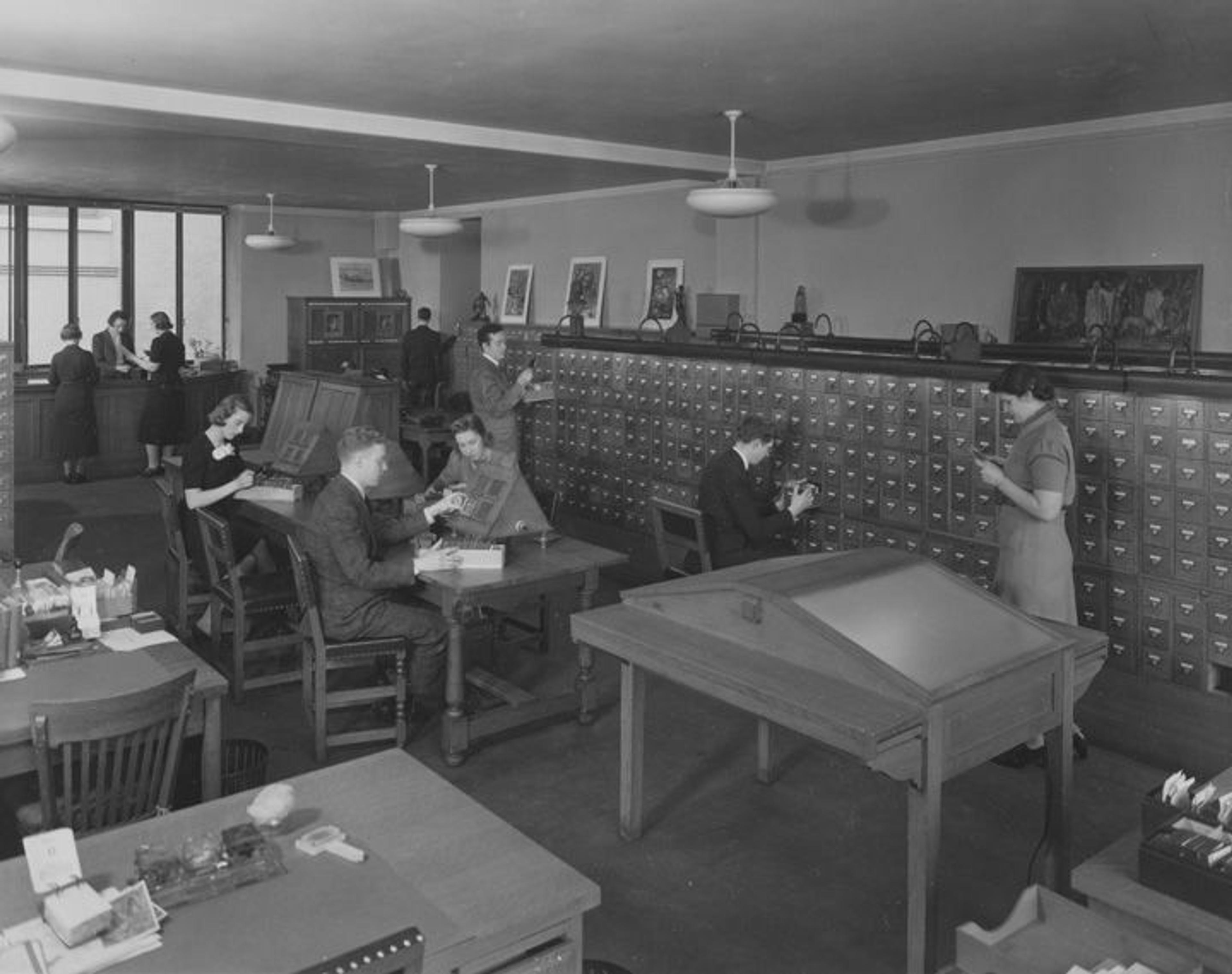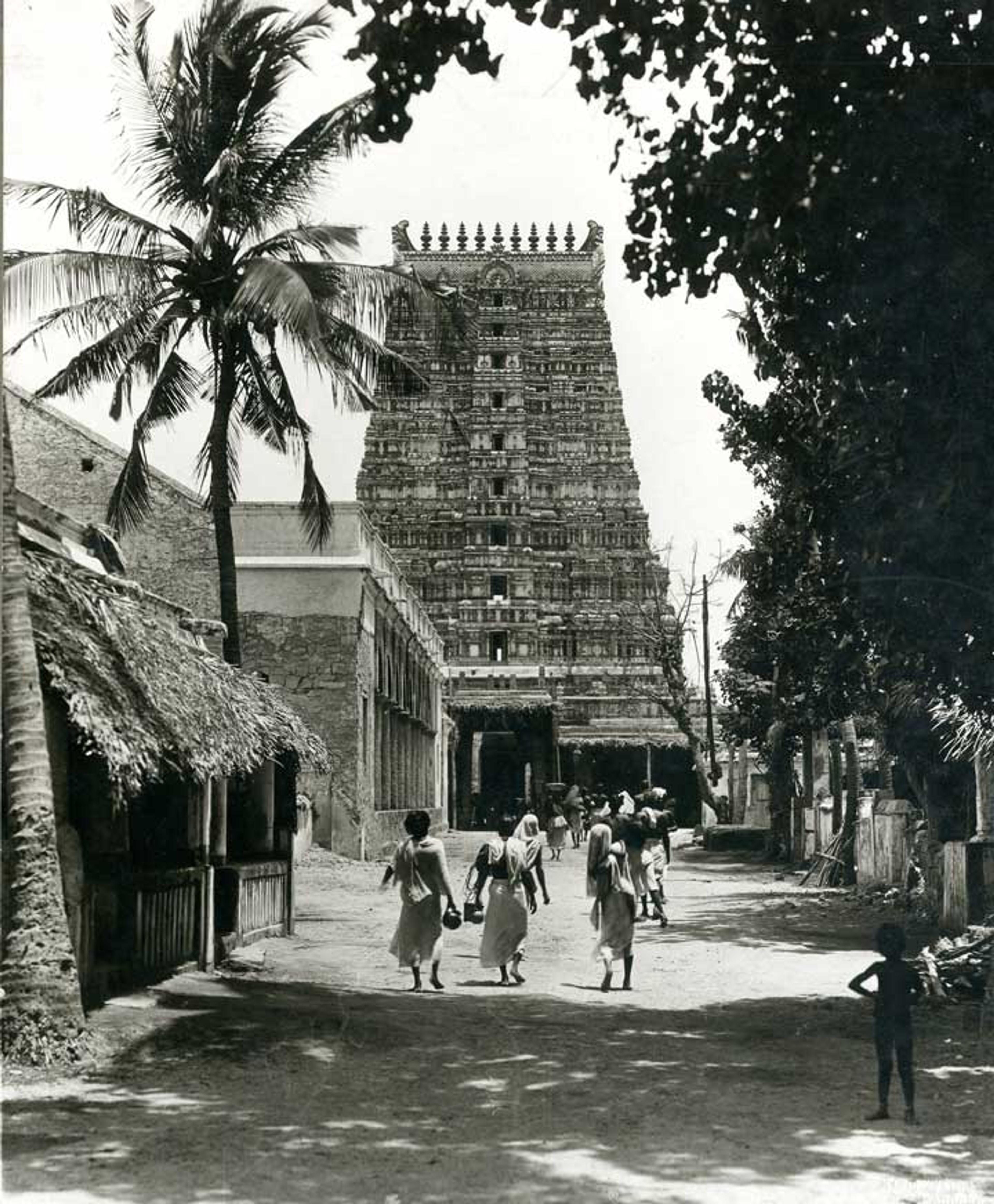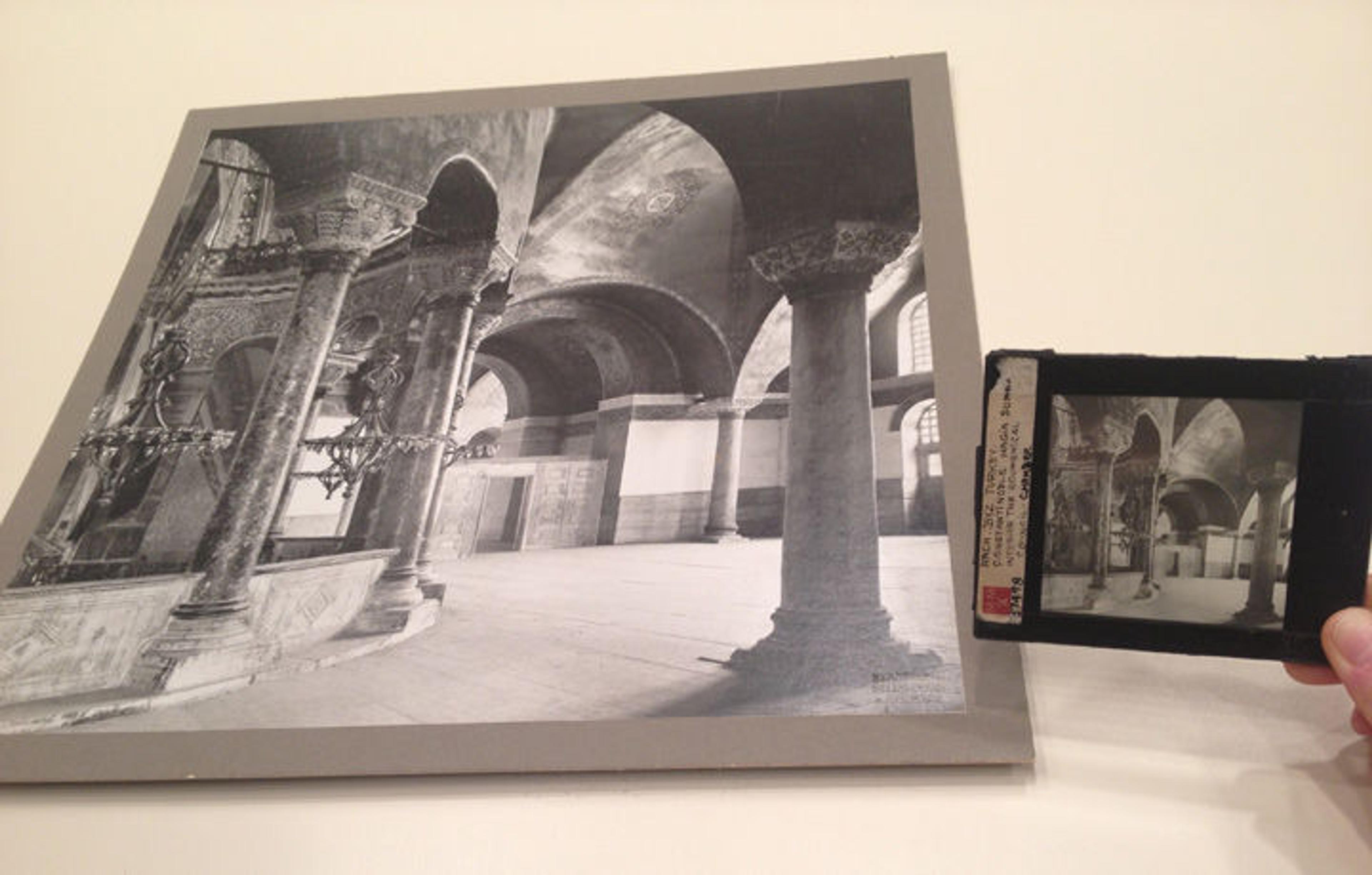
The Metropolitan Museum of Art, The Photograph and Extension Division. Photographed February 9, 1939
«A few weeks ago, the Department of Islamic Art transferred a group of large-scale black-and-white photographs from one of the Museum's storerooms to our departmental library. Mounted on board, the photographs primarily depict architecture from the Middle East and South Asia, and include details of tilework, reliefs, and archaeological sites. While structures such as the Hagia Sophia are easily recognizable, most of the photographs' labels have been oddly cropped, leaving unknown the titles of the various sites, the photographers, and the years in which they were taken.»
By reaching out to colleagues in Watson Library and the Digital Department, I learned that the photographs were once part of The Met's Photograph and Extension Division, a section of the Museum that housed objects and visual reproductions to "be borrowed by public and private schools, colleges, museums, libraries, clubs, churches, and individuals anywhere in the United States" for research and educational purposes. The Annual Report of 1940 cites 5,123 borrowers of objects from the Photograph and Extension Division that year. At the time, the division held over 108,000 lantern slides and 33,000 photographs and color prints for lending!

The Metropolitan Museum of Art, The Photograph and Extension Division. Photographed February 9, 1939
Though it's unclear when exactly the Photograph and Extension Division officially closed, at some time around the mid-20th century Watson Library received its holdings for placement in their reference collection. Soon after, the photographs were again transferred, either offsite or to departments that wanted them, and about a decade ago, all the remaining photographs were offered to various departments for their own use. Similarly, the Slide Library's collection of lantern slides was offered to relevant departments in 2013. Roughly 4,000 lantern slides were transferred to the Department of Islamic Art, which now sit in archival Talas boxes organized into 30 subject categories including "Indian Costumes," "Persian Manuscripts," and "Turkish Architecture."
Compared to JPEG and TIFF image files, the lantern slides are heavy (each is slightly lighter than an iPhone), fragile (made of glass), and large (3.25 by 4 inches each). In the late 19th century they were considered an innovation in museum and university education throughout the United States. Unlike printed photographs used previously, lantern slides could be seen by a greater audience, and were also much cheaper to manufacture. Furthermore, compared to prints and drawings, the photographic image was considered a more reliable and accurate source of documentation. Lecturers no longer had to provide such detailed visual descriptions of each site, and therefore could invest more energy in interpreting them for the audience. Decades later, the image quality is still excellent and the slides feel like artifacts in their own right, giving an eye into museum research, teaching, and lecturing before the arrival of the digital age.

Scan of a photograph documenting a temple in Tamil Nadu, possibly Tirumalai. Photograph by the Klein & Peyerl MADRAS Photograph Studio; photographer unknown
Unlike most of the images in the Collection section of the Museum's website, which specifically correspond to objects in The Met collection, these photographs document actual sites, architectural structures, and their surrounding landscapes. While official Museum photography seeks to document the object, most ideally, with a sense of timelessness and under ideal light, these archival photographs capture a moment in time. Each slide records singular details specific to that year and climate: pedestrians, vehicles, wildlife, and, most importantly, the degree to which the site was preserved when the shot was taken. In light of the recent destruction of historic sites throughout the Middle East, this documentation has particular salience today.
I began going through the collection of photographs with Mellon Curatorial Fellow Matt Saba, who is currently digitizing materials from the Herzfeld Archive so they are accessible online through Watson Library's Digital Collections. Noting that some of the photographs' labels were printed with "Slide Library," we were able to locate a few positive matches between prints and lantern slides, suggesting that there were likely more in the batch.

Lantern slide and its corresponding photograph documenting the interior of the Ecumenical Council Chamber in the Hagia Sophia, Istanbul, Turkey
Now that our department holds these two related archives of prints and slides, the next step is to begin organizing them so they are accessible and searchable by researchers. In the coming weeks, we will rehouse the photographs in Talas boxes, match them with their corresponding lantern slides, and identify the sites and/or objects documented. Some photographs also contain embossed logos revealing the photographic studio that printed the original image, which may help in indicating when they were taken, as many of these studios no longer exist. We will then digitize the prints and create a labeling system that will allow researchers to locate sites by name, place, photographer, and, if possible, year. The goal is to create an archive that has both a digital and physical life documenting not only the history of these sites, but also The Met's history in researching them.
The author would like to thank Senior Digital Asset Specialist Stephanie Post for her insight and assistance regarding the history of the Museum's Photograph and Extension Division and the Slide Library.
Resources
Blumenthal, George, and H. W. Kent. "Report of the Trustees of The Metropolitan Museum of Art for the Year 1940." Annual Report of the Trustees of The Metropolitan Museum of Art 71 (1940): 1–6.
Metropolitan Museum of Art. Museum Extension Division, 3. New York: The Metropolitan Museum of Art, 1940.
Miyahara, Katsura. "The Impact of the Lantern Slide on Art-History Lecturing in Britain." The British Art Journal 8 (2) (2007): 67–71.
Roessel, Annemarie van. "Through a Glass, Brightly: Re-viewing a Lost Architectural and Pedagogical Landscape Through Historic Lantern Slides." Art Documentation: Journal of the Art Libraries Society of North America 22 (1) (2003): 4–8.
Related Links
In Circulation: "The Ernst Herzfeld Papers at the Met: A Digital Resource Documenting the Study of Near Eastern Civilization" (September 24, 2014)
Digital Underground: "'Caravans of Art': The Neighborhood Circulating Exhibition Series, 1933–42" (March 25, 2015)